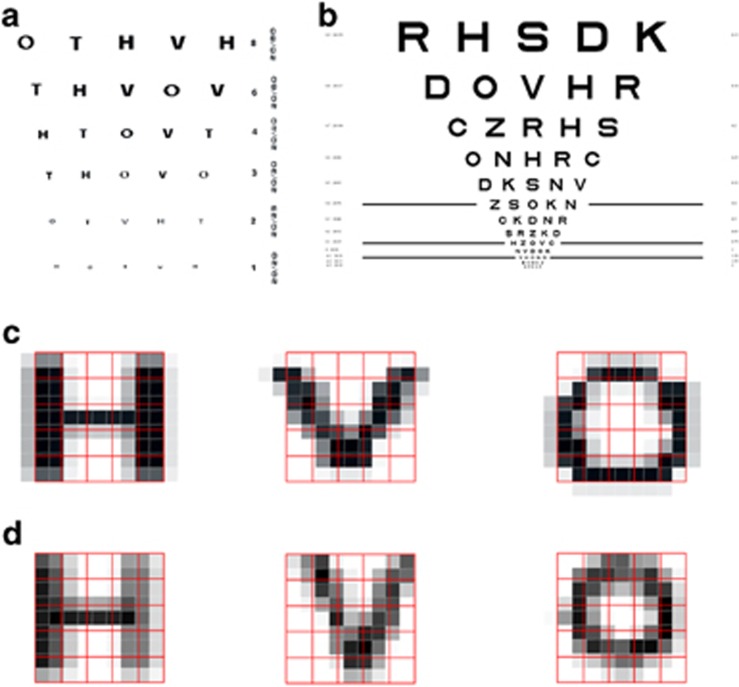Sir,
I read with interest the article Effectiveness of a smartphone application for testing near visual acuity.1 Even though the results are interesting, I have a few concerns and comments. An analysis of the iPhone 5 limitations on displaying the optotype detail is required for discussing the results. If we consider the detail as the pixel size (PS), we can obtain the finest visual acuity (VAlim) that a smartphone can display by the next equation,
where DPI is the dots per inch of the device, a is the PS, and d is the presentation distance (mm). Furthermore, PS does not only determines the VAlim but also the consecutive levels above this. The detail for 20/20 is around 1.34 PS that is not physically possible to be displayed. In cases on which detail of the optotype does not coincide with an integer number of pixels or if the location of the detail does not fall exactly on a pixel, IOS uses a drawing interface for anti-aliased rendering.2 Anti-aliasing3 consists of contours smoothing by multiple gray levels of the neighboring pixels as shown in Figure 1c and d. Figure 1a shows the EyeHandBook and Figure 1b shows another app designed to test near VA at 40 cm according to the ETDRS standard. I performed a screenshot of both apps with an iPhone 6 and I zoomed them in order to check anti-aliasing effect on each app. Figure 1c shows that EyeHandBook fails in the standardized design of letters inside a 5 × 5 grid (width exceeds height, at least with iPhone 6). On the other hand, Figure 1d shows that the optotype of the ETDRS near chart is in a 5 × 5 grid but it has also poor definition. In conclusion, although disagreement between smartphone near charts and printed charts could be due to all the reasons that are described in the discussion,1 authors do not mention what I believe is an important reason for the lack of agreement, the poor definition of optotypes due to PS in applications for testing near VA.
Figure 1.
Screenshots made by iPhone 6 for (a) EyeHandBook app and (b) app designed by the author. Zoomed optotypes for the 20/20 line of (c) EyeHandBook app and (d) app designed by the author.
Footnotes
R-VM has developed vision applications for smartphones and tablets that he currently distributes by the apple store.
References
- Tofigh S, Shortridge E, Elkeeb A, Godley BF. Effectiveness of a smartphone application for testing near visual acuity. Eye 2015; 29: 1464–1468. [DOI] [PMC free article] [PubMed] [Google Scholar]
- IOS Developer Library. iOS Drawing Concepts. Draw. Print. Guid. iOS. Available at https://developer.apple.com/library/ios/documentation/2DDrawing/Conceptual/DrawingPrintingiOS/GraphicsDrawingOverview/GraphicsDrawingOverview.html. Accessed on 13 December 2015.
- Bach M. Anti-aliasing and dithering in the ‘Freiburg Visual Acuity Test'. Spat Vis 1997; 11: 85–89. [DOI] [PubMed] [Google Scholar]



